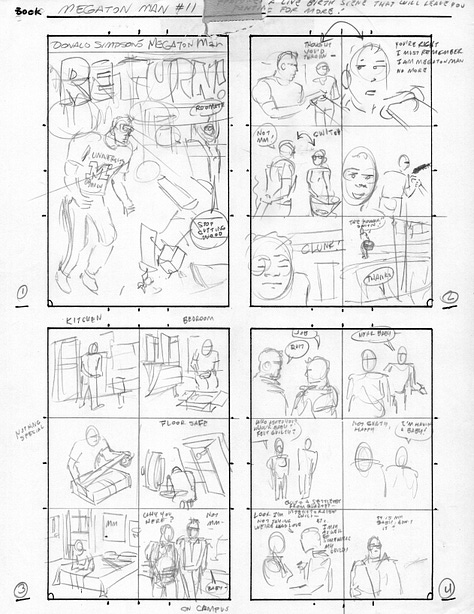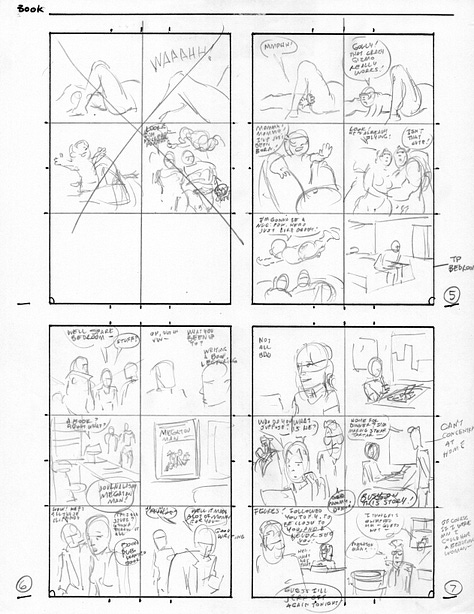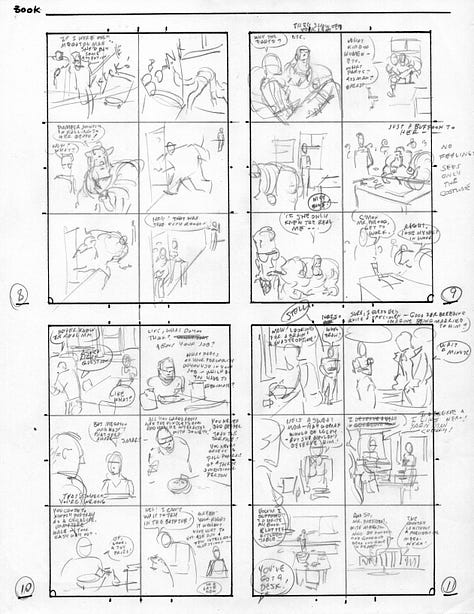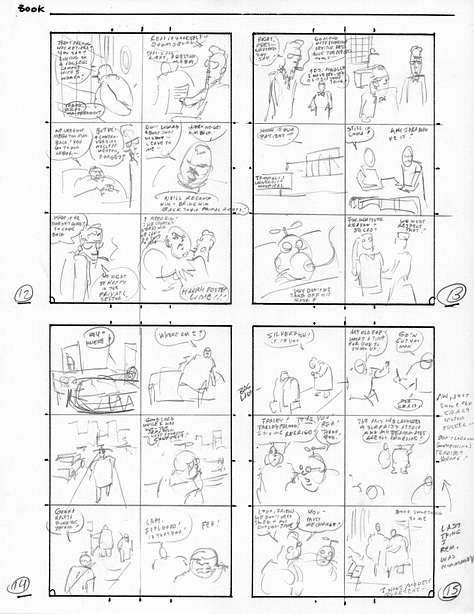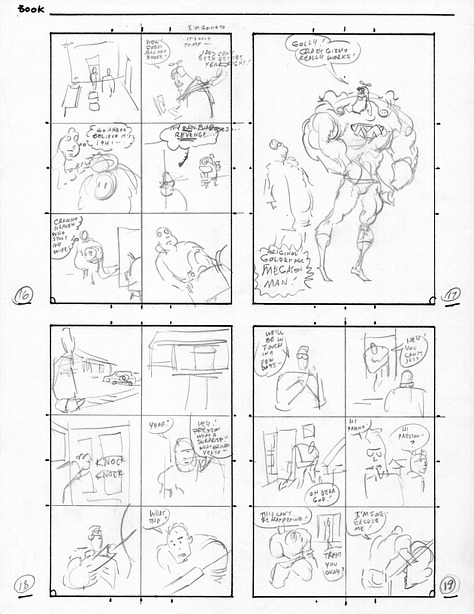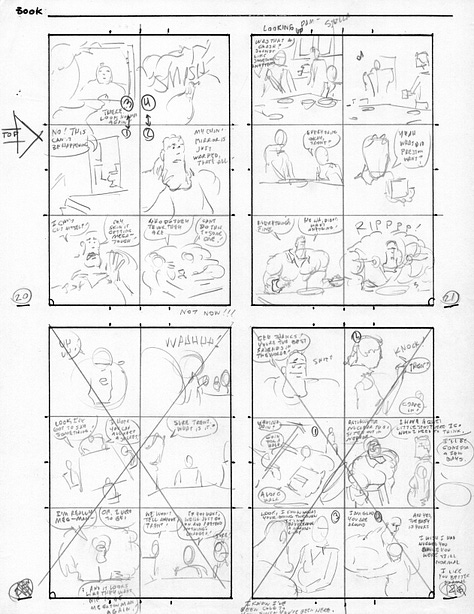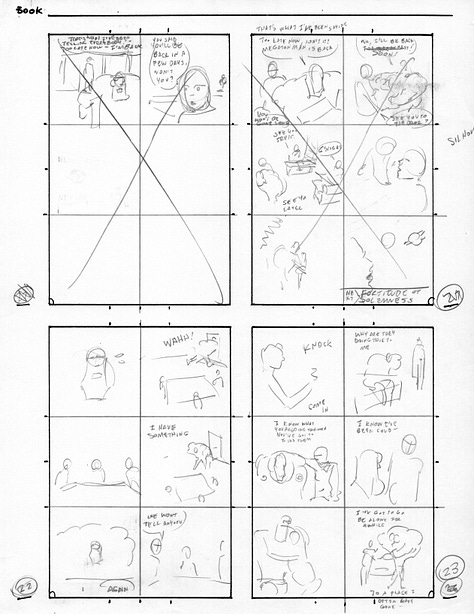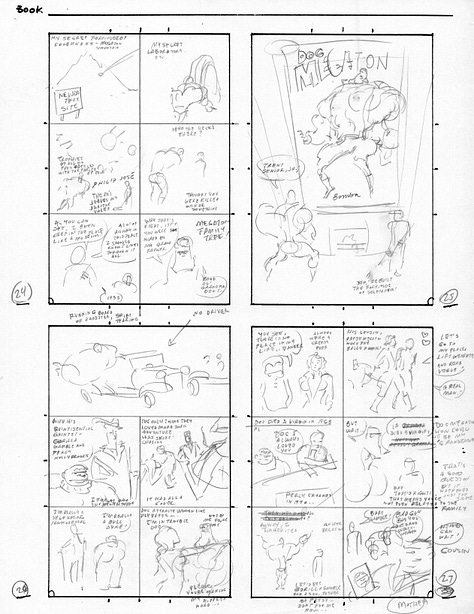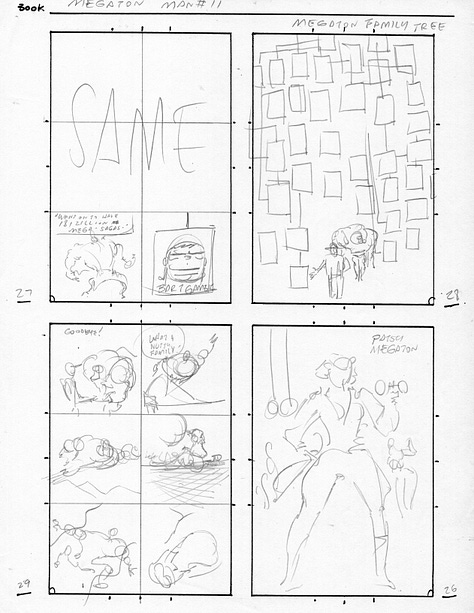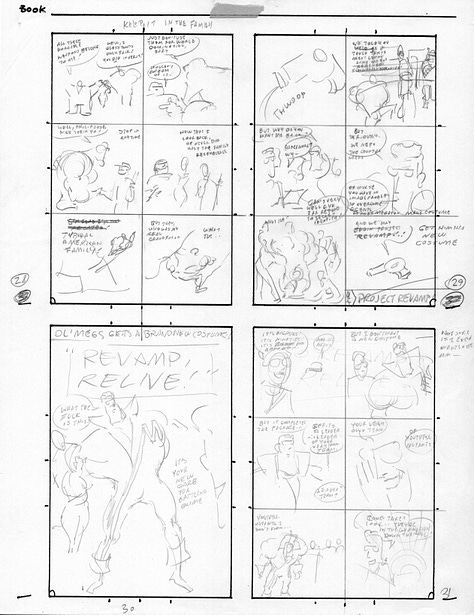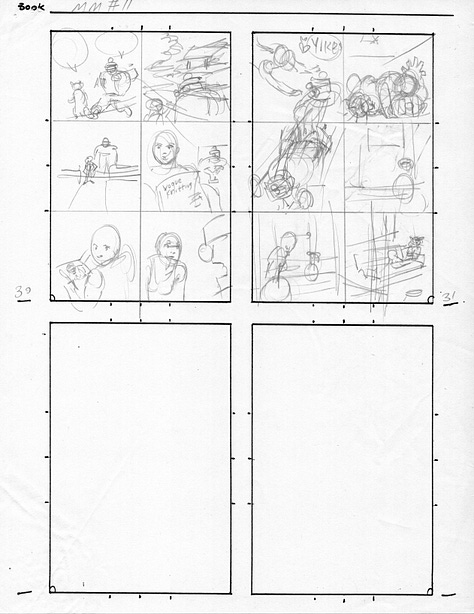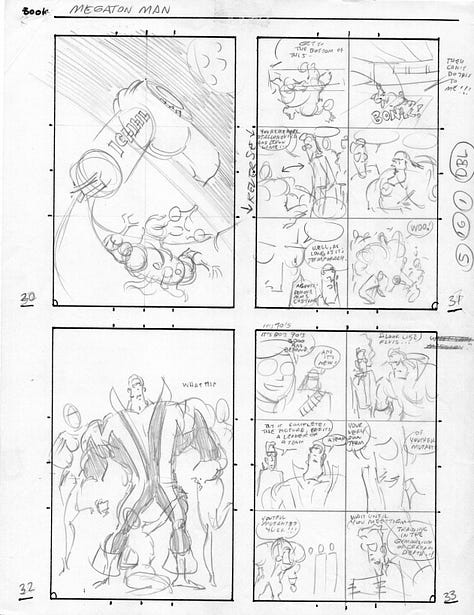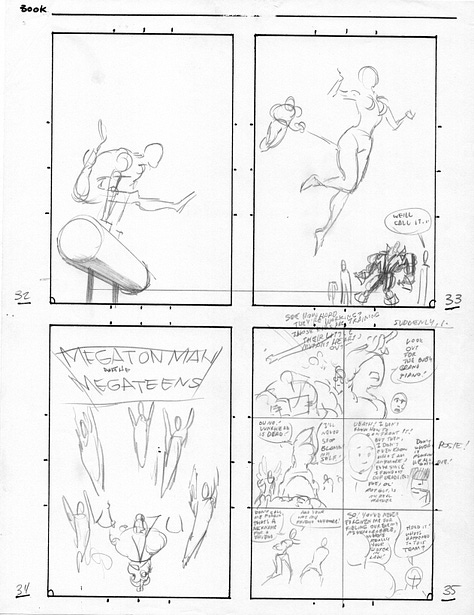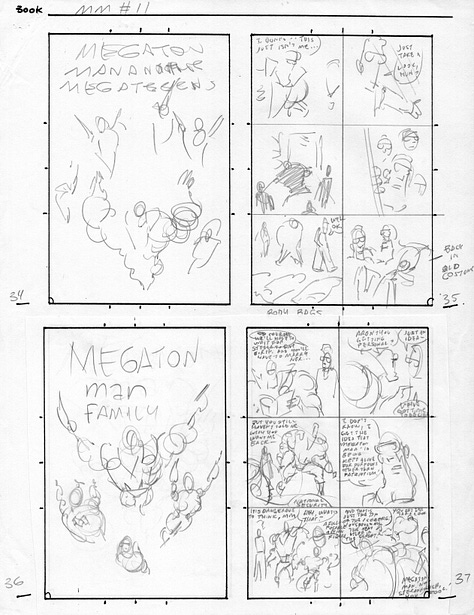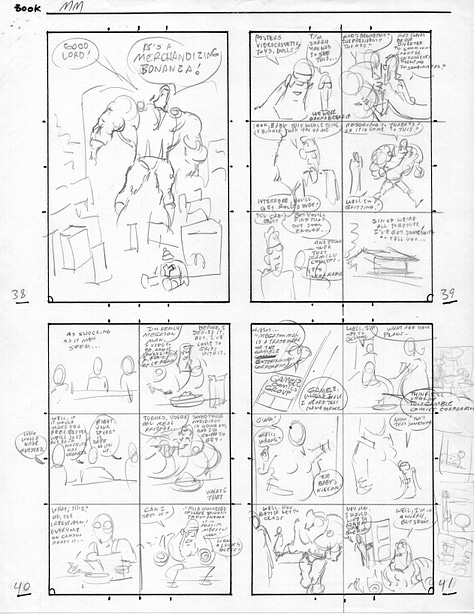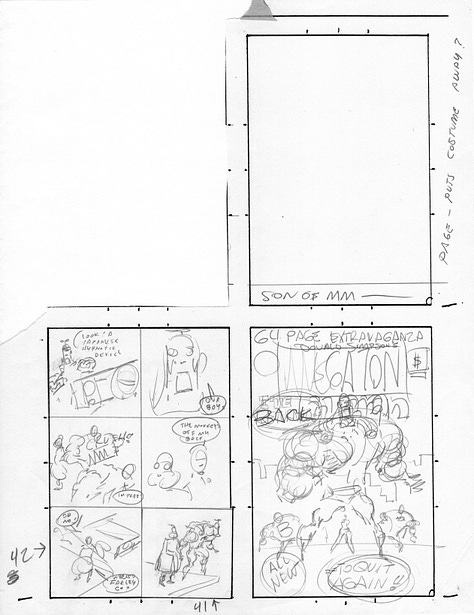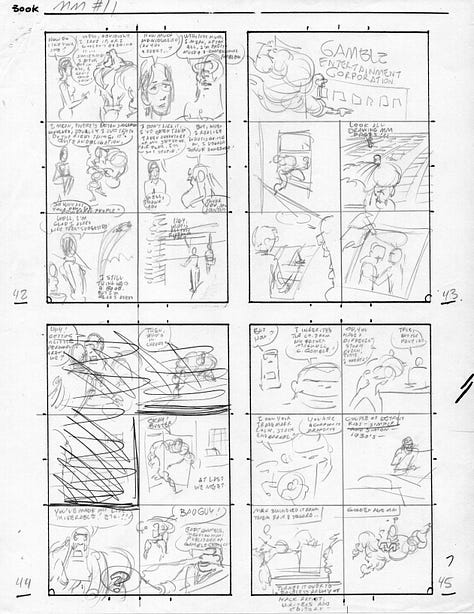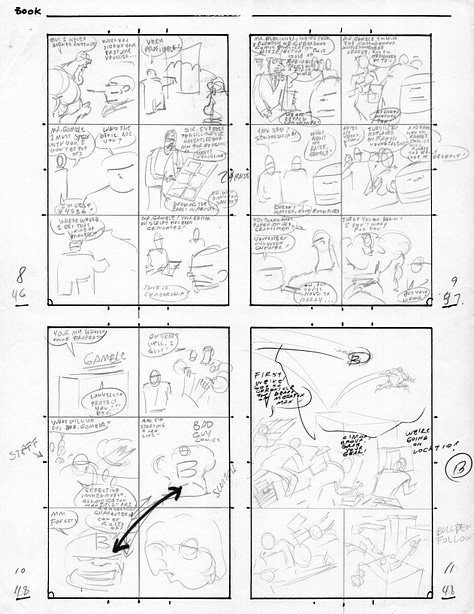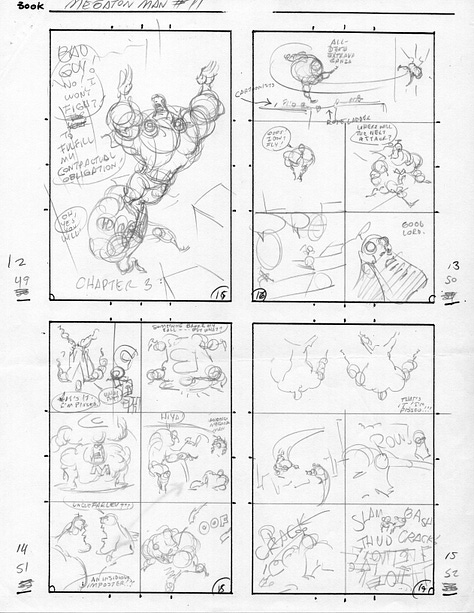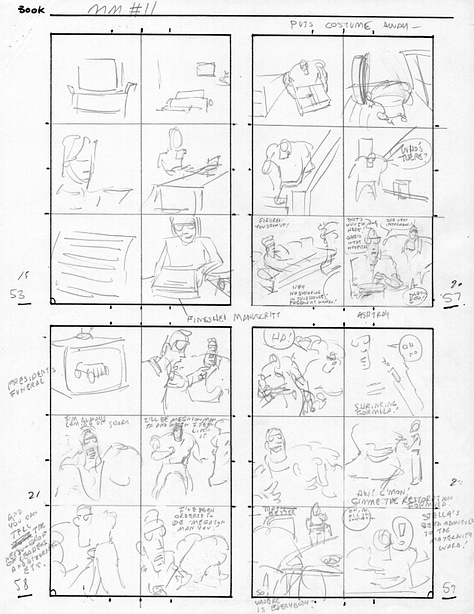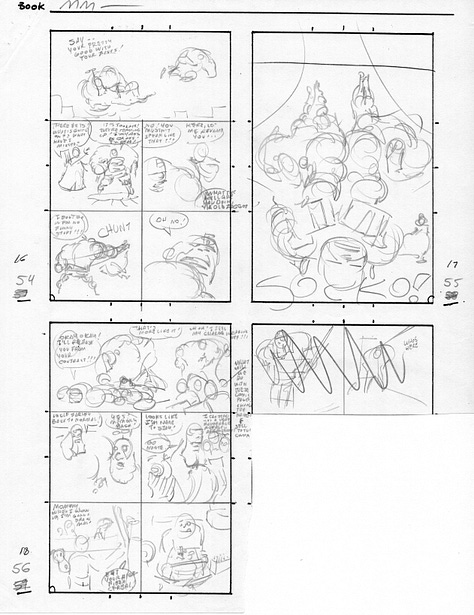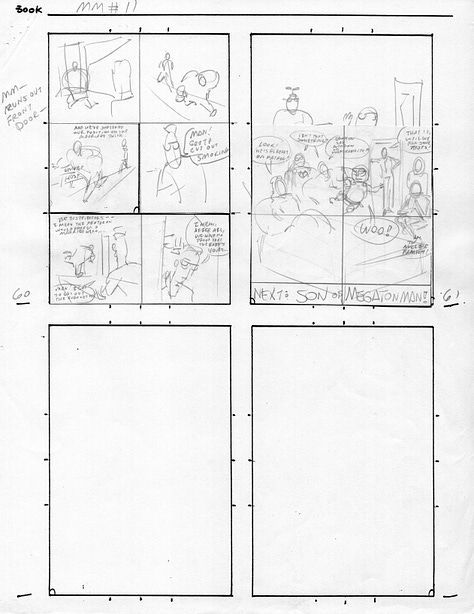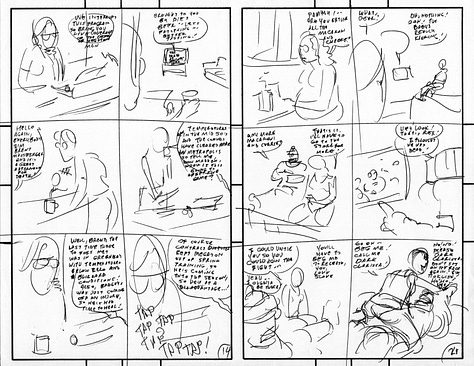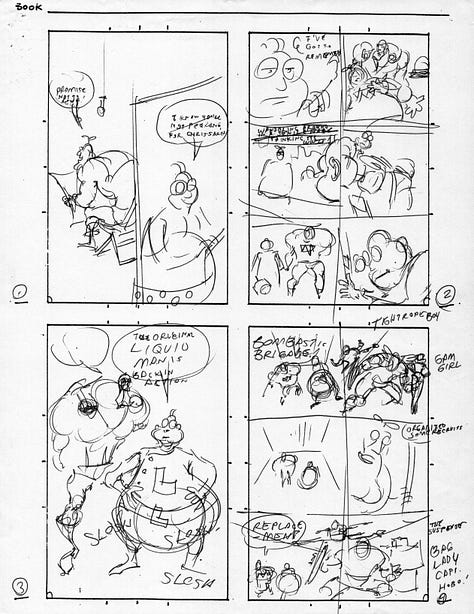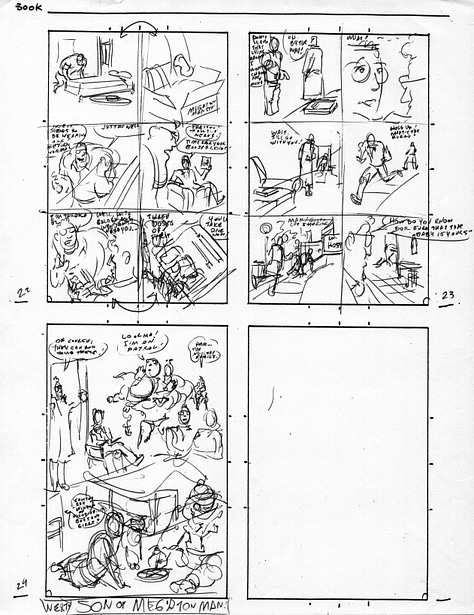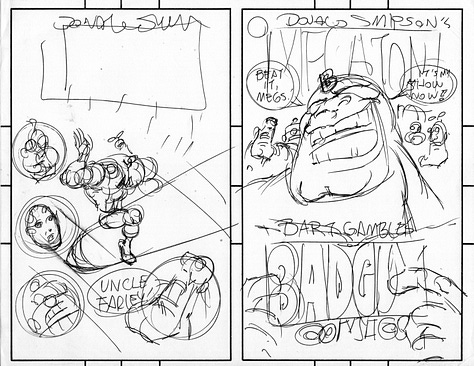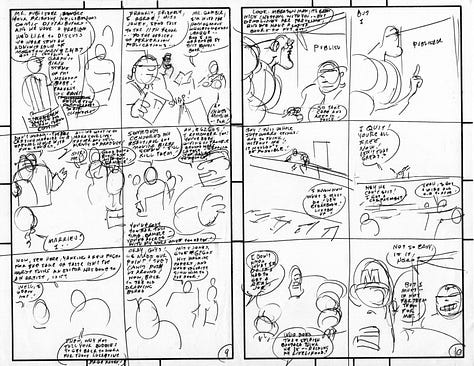In January 1987, I submitted a typewritten plot outline for Megaton Man #11 to Kitchen Sink Press, which I then conceived of as a double issue. Sometime in the spring, I thumbnailed my ideas; a letter dated April 2, 1987 mentions the roughs—most likely the ones in pencil here—suggesting I worked on them in February, likely in between issues #4 and #5 of Border Worlds.
A comparison of the thumbnails with the published The Return of Megaton Man three-issue mini-series will reveal numerous similarities—especially key gestures and panels—as well as omissions and changes. When these later rewrites and insertions (the ones in ink) were made exactly is unclear.
By November 1987 I felt there were sufficient ideas to expand this material into a Megaton Man #14. I informed the publisher of this, but after the response I got, with their insistence on renumbering of the series over my express objections, I decided to trim the material back to three 24-page installments. These became The Return of Megaton Man #1-#3.
Although these thumbnails are rather rough and likely incomprehensible without the printed comic books side-by-side, the entire process—plot, thumbnails, script to finished pages—represented a tremendous progression from the primitive way I had worked on my very first comic book, Megaton Man #1, just three years earlier.
Then, I barely made notes on the back of an envelope before making up a page at a time, sometimes only a panel at a time, with numerous corrections and paste-up rearrangements of panels, until I had a complete first issue. After ten issues of Megaton Man and seven of Border Worlds, I was beginning to get a handle on my workflow.
Later, I would become even more methodical, with more detailed thumbnails then full-sized roughs and later full-scripts. For decades, I would use different approaches depending on the material—sometimes plot-script-pencils straight on the Bristol, sometimes improvisation without any direction for the story in mind.
Lately, I tend to write full scripts that change drastically when converted into comics pages, and I’ve recently gone back to roughs that are blown up then refined on tracing paper and then light-tabled onto Bristol in pencil before inking. I continue to find that there is more than one way to skin a cat and no single, dogmatic approach is right or wrong.
What is significant about Megaton Man #11 is that with these new ideas for Megaton Man and cast, which transplanted the storyline to a Midwestern college campus, I felt a growing sense of security and confidence as a writer-artist and independent creator, such that I was willing to submit ideas to the editor and publisher and solicit feedback well in advance of penciling and letter the book or putting it on the schedule.
The acrimony and sheer, absolute hatred I got back from the publisher—what I knew to be half-truths, willful distortions, and outright lies along with unwarranted name-calling and bullying verbal abuse around Thanksgiving 1987 over the renumbering of Megaton Man #11—which they frankly conceded was a feckless gimmick based on nothing more than “gut instinct”—could not have come at a worse time in the evolution of the Megaton Man IP.
I never could have completed The Return of Megaton Man had I not already accomplished most of the work represented here already and had a strong desire to finish what I started, which overrode my antipathy for the publisher going forward—a feeling that never abated. I somehow got talked into two or three more Megaton Man comics after this, along with two other one-shots, but I never felt the imprint to be a safe space for my creator-owned work ever again and found it impossible to continue after 1990.
I can’t stress enough how much I hated every minute of working with Kitchen Sink Press from December 1987 on, and how it took years for my innate fondness for Megaton Man—the character and the IP—to return. But it did.
“The record isn’t all it might have been,” sang Jeff Lynne. But there are always subsequent performances, in the words of Jonathan Miller.
